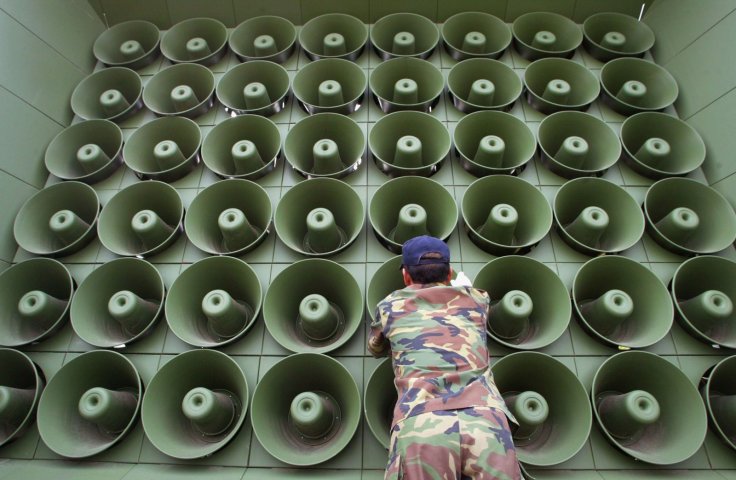
Source: Getty Images
Written by Lillian Marx
In a move that the South Korean government has dubbed “immature,” this week North Korea began sending propaganda balloons across the border filled with trash, including cigarette butts and even used toilet paper. The garbage is accompanied by leaflets, some of which refer to South Korean leader Park Geun-hye as a “filthy president.”
The timed detonations reached border cities, including the capital, Seoul. While leaflet-packed balloons have caused some incidental harm–damaged cars and rooftop water tanks, for instance–the North’s propaganda campaign faces little chance of inflicting psychological damage on the Republic of Korea.
Balloons are a classic component of the inter-Korean propaganda war that has raged, on and off, since the Cold War. The tactic was dispensed with after successful inter-Korean summit talks in 2000, as was the practice of blasting broadcasts over loudspeakers across the border.
Independent South Korean activists continued to send balloons carrying everything from dollar bills, to Western entertainment media, to leaflets condemning the Supreme Leader. It was only when a North Korean torpedo struck a South Korean warship in 2010 that Seoul broke the propaganda ceasefire officially instituted in 2004 and reintroduced loudspeaker broadcasts.
When South Korea accused North Korea of planting mines in the DMZ last August, injuring two South Korean soldiers, Seoul again responded with broadcasts. When North Korea tested out a purported H-bomb this January, the South began the blasts and balloons anew–a move the North reciprocated, until the back-and-forth culminated in an exchange of artillery fire.
Now, as the South Korean Ministry of Defense warns that North Korea is preparing to launch the long-range missile it promised to deploy sometime in February, the propaganda war reflects, and in fact increases, the pitch of the tension. The pressure that built up in August was diffused after North Korea gave in to diplomatic wrangling and expressed regret for the maimed soldiers. But it would be entirely anathema to Kim regime legitimacy to apologize for the country’s nuclear program.
The content of contemporary South Korean propaganda remains similar in spirit to that of the Cold War–the contrast between a free and wealthy South and an oppressive North being the central message. But with loudspeakers blasting at a volume that carries K-pop, weather reports and denunciations of Kim Jong Un 12 miles beyond the border, the overall effect is as much profoundly annoying as ideologically persuasive.
President Park entered office with her signature policy of trustpolitik, which sought Korean reconciliation through mutual trust-building. Yet, for instance, the aggressive back-and-forth propaganda that followed North Korea’s nuclear test in January contributed to the overall risk of what U.S. Department of Defense spokesman Commander William Urban termed a “cycle of escalation.” The intensifying animosity was coarsely expressed by a North Korean leaflet at the time: “Let us beat to death Park Geun-hye’s gang of dogs for resuming propaganda broadcasts and deteriorating North-South relations!”
The arrival of North Korea’s trash balloons this week accompanies the country’s far more belligerent promise to launch an earth-observation satellite into orbit (understood as a flimsy decoy for developing ICBM technology) before February 25. The trash stunt may be “immature,” but it perpetuates a level of tension that was tellingly illustrated by initial concerns that the deployments of detritus might be biochemically hazardous. This trash was just trash; meanwhile, South Korea has resolved to intercept any debris from the North’s anticipated rocket launch.